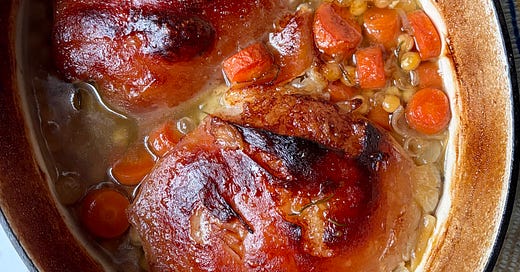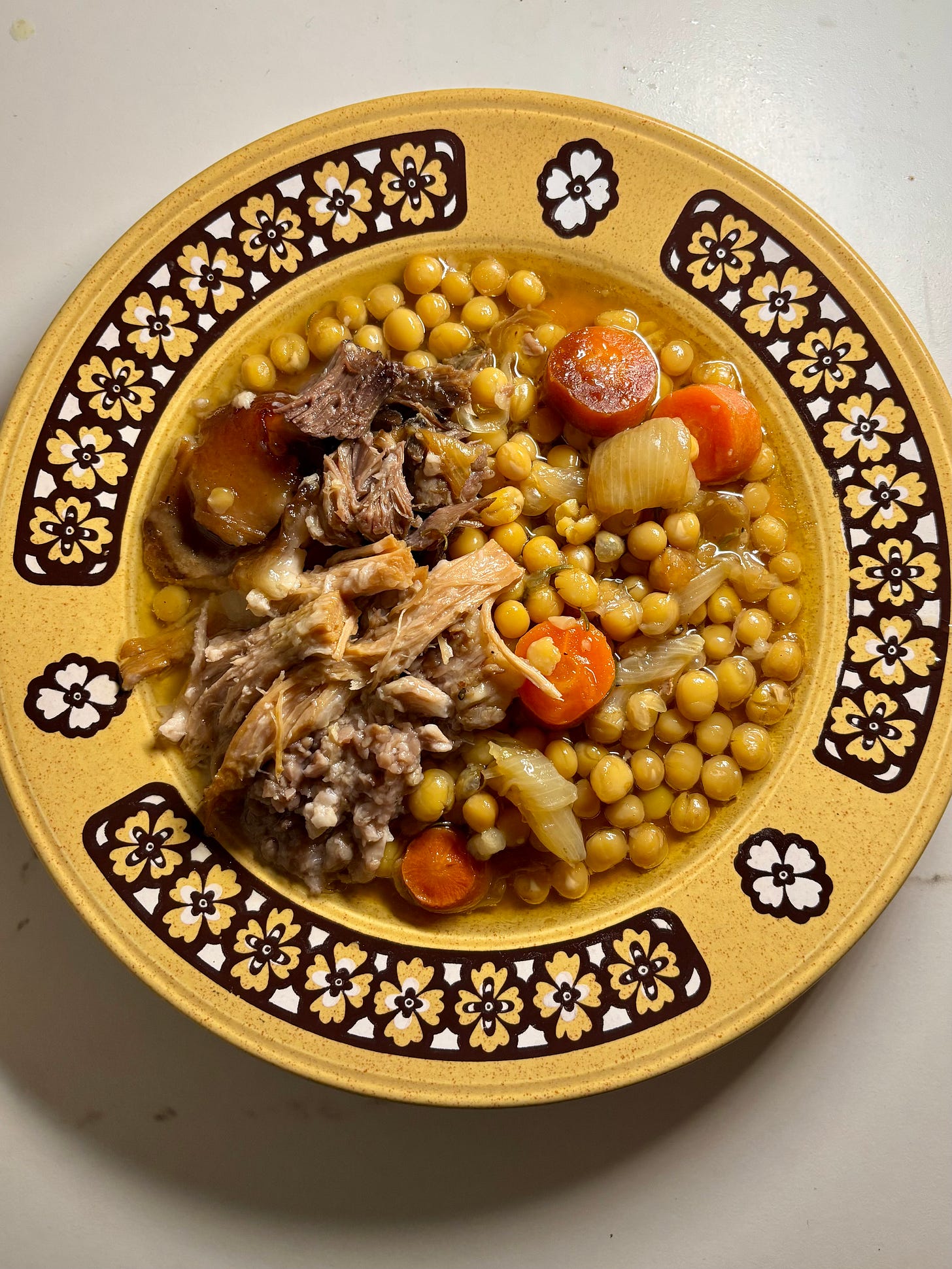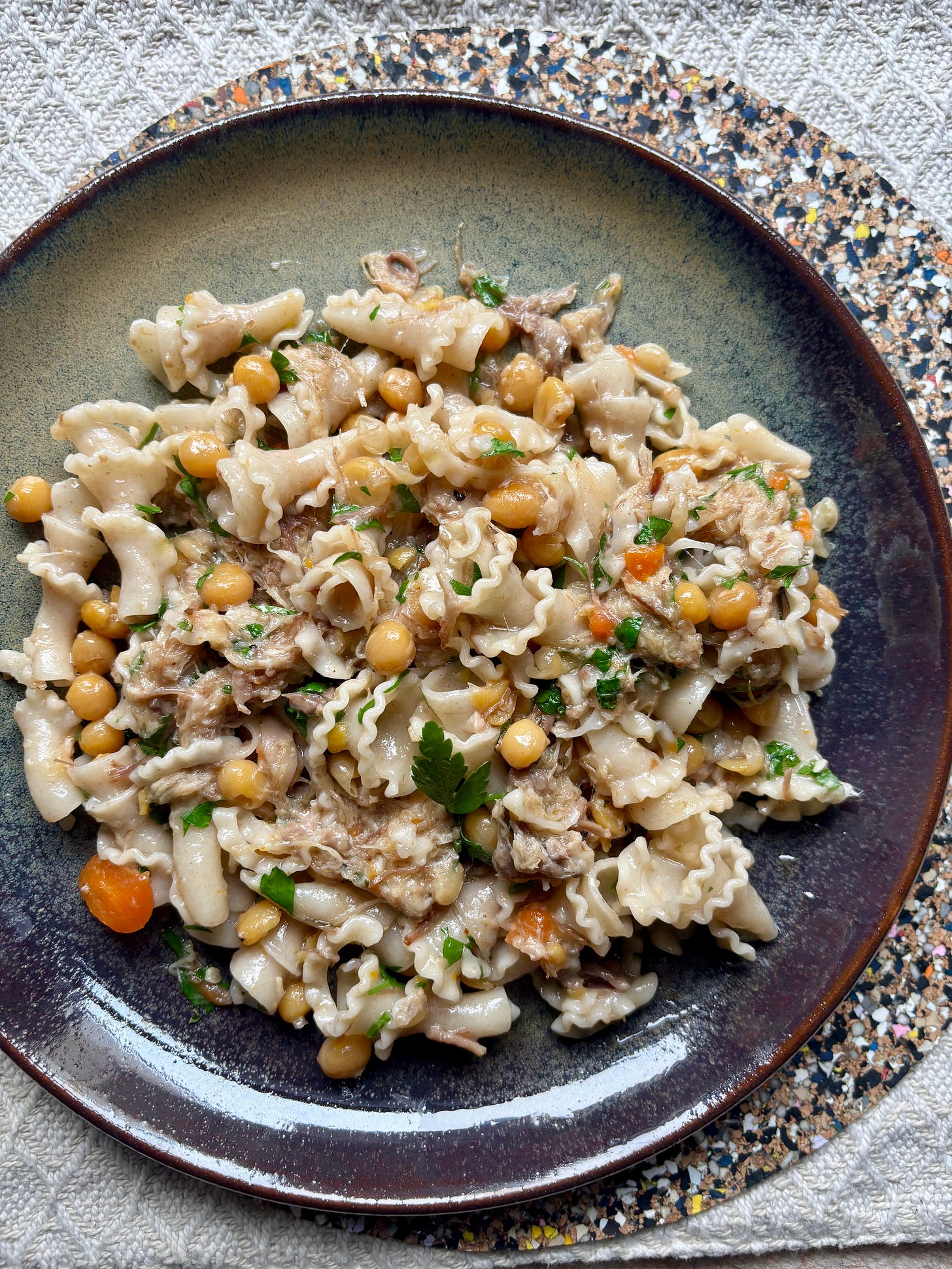Welcome back to the second serving of my batch cook series. This time, the base recipe I’m sharing is for pork cheeks and beans braised in white wine and chicken stock with carrots, onions, rosemary and bay leaves. A humble yet hearty recipe that’s easy to throw together then leave to slowly cook. Plus two follow on recipes to transform the finished dish into something new: a pasta and a pie. Both simple twists that breath new life into leftovers, proving that batch cooking can not only save time and energy, but give you varied meals to look forward to.
Pork cheeks may feel like a niche ingredient to use and I hear you, they’re not something available in the supermarkets. But if, like me, you endeavour to cook less and better meat then they can be a very cost effective way of upgrading to higher quality meat. Several of the organic farms selling directly to customers online (such as Pipers Farm - see my discount code below) that I turn to for properly high welfare meat stock the lesser used cuts to make the most of whole animals. Pigs’ cheeks are usually one of them. While it can feel a little daunting to cook something you’re not used to, this recipe for braised pigs’ cheeks is very simple. After a small amount of prep you can leave it to slowly bubble away on a Sunday and the result is a rich, comforting meal with plenty of options for the leftovers in the week.
Pig’s cheeks consist of the muscle of the cheek known as the oyster, and the surrounding fat plus a layer of rind. A butcher is likely to sell you just the oyster unless you specify you’d like them with the rinds on. Having the rind too opens up multiple options of how to cook them. Surrounding the muscle are layers of fat and meat, a bit like pork belly, which makes pork cheeks perfect for slow cooking. As they gently cook the fat keeps the muscle juicy, resulting in meltingly tender pork with a rich taste. You can slowly roast them to crisp up the skin while the meat cooks. Or you can braise them in wine and stock to infuse them with flavour and lock in all of the moisture. Incidentally, pork cheeks are the cut used to make guanciale – the Italian cured meat used in carbonara.
One pork cheek with the rind will serve two people and cooking them with beans bulks the dish out to serve more. You can enjoy the main recipe as it is, with just some greens or other veg on the side, so the beans act as the carb on your plate. With the leftovers, the addition of a carb means the beans take on a role of additional protein.
Pork and beans are regularly paired in Italian cuisine so using some of the leftovers in a pasta dish is a clear winner. And it’s ready in the time it takes to boil the pasta, so ideal for a weeknight. I’ve suggested cooking the pasta in less water than you would usually (or any Italian would deem acceptable), but this is a clever hack that we can enjoy breaking ‘the rules’ for. Cooking the pasta in less water means the starch content in the water is higher. When you mix the pasta and the sauce at the end of cooking, adding a glug of this starchy water helps emulsify the sauce. As this sauce has a fairly high fat content (from all the delicious pork) this extra starch will combine with the fat to make a beautifully silky sauce.
For the second transformation, I’ve stirred harissa through the pork and beans to add a smoky, fiery taste, and crème fraîche to give the sauce body. Wrapping the filling in sheets of filo pastry makes a quick pie that feels incredibly special for something so easy to pull together.
The Recipes
Braised pork cheeks and beans
Serves 6-8
250g dried beans or peas (I used Hodmedod’s Flamingo Peas), soaked for 6 hours or overnight in plenty of water
3 onions, sliced
2 carrots, scrubbed and sliced
6 garlic cloves, sliced
400ml white wine
2 bay leaves
2 stems rosemary
600ml chicken stock
2 rind-on pork cheeks (about 750g each)
You could also use pigs cheeks without the rind, it will be a much leaner cut, with just the cheek muscle. You’ll need 4 instead of 2.
Remember to soak the beans for at least 6 hours before you start cooking. If you forget to soak them, you can speed soak them while the pork starts cooking. Put them in a pan of water with 1 tsp bicarbonate of soda and bring to the boil. Boil for 10 minutes then remove from the heat, cover with a lid and leave for 1 hour, before draining and cooking as stated in the recipe below.
1 Remove the pork cheeks from any packaging, pat dry and season with salt. Set aside to air and come to room temperature.
2 Heat the oven to 120°C fan. Warm 1 tbsp oil in a large casserole dish over a medium-high heat then add the onion, carrot and garlic with a pinch of salt. Cook for about 10 minutes, to soften a little and get a bit of colour. Increase the heat and pour in the wine, adding the bay and rosemary too. Bubble for a few minutes then pour in the stock. Bring to the boil then lower in the pork cheeks, skin-side up.
3 Cover with a lid and transfer the pot to the oven. Cook gently for 3½ hours. Meanwhile, drain and rinse the soaked beans. Tip into a large saucepan, cover with water and bring to the boil. Reduce to a simmer and bubble gently for 45-55 minutes until tender enough to crush between your thumb and finger.
4 Once the pork has had 3½ hours, remove the lid and stir beans/peas through the liquid surrounding the pork. Cook for 1½ hours without a lid. Increase the heat to 200°C fan and cook for 10-15 minutes, to crisp up the skin.
5 Lift the cheeks out of the pan and onto a board, then taste and season the beans/peas and sauce. You can serve the dish as it is, shredding up the pork meat and cutting up the crisp skin (potentially removing some of the fat - but keep this aside if you do), along with some greens.
6 Transfer the leftovers to a container, leave to cool and then chill. Once it’s cold you can skim the fat off the top of the dish and store this separately.
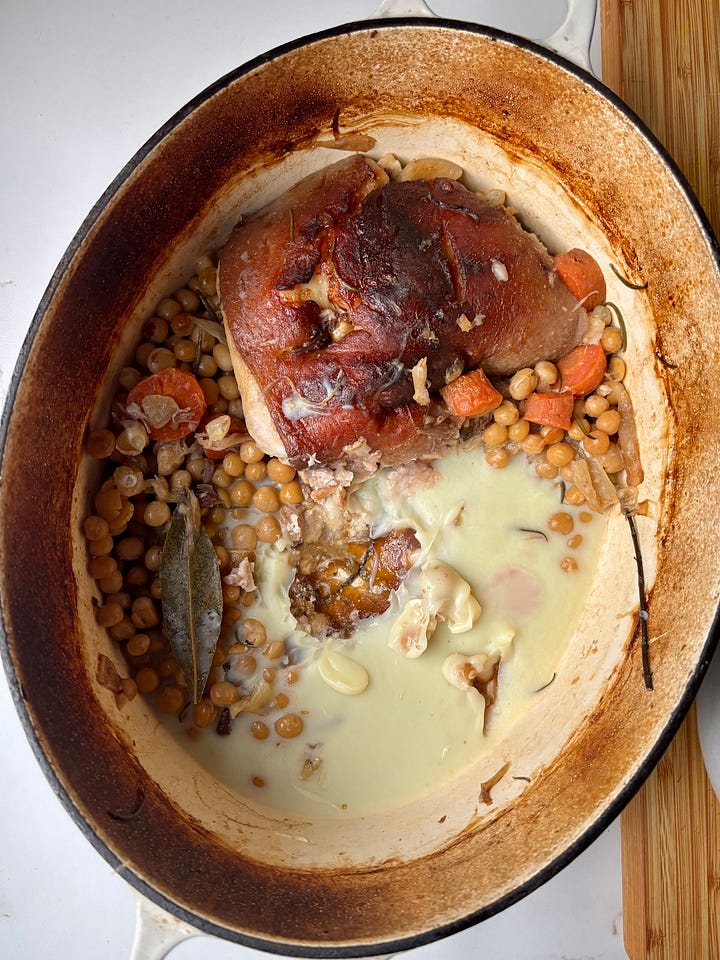
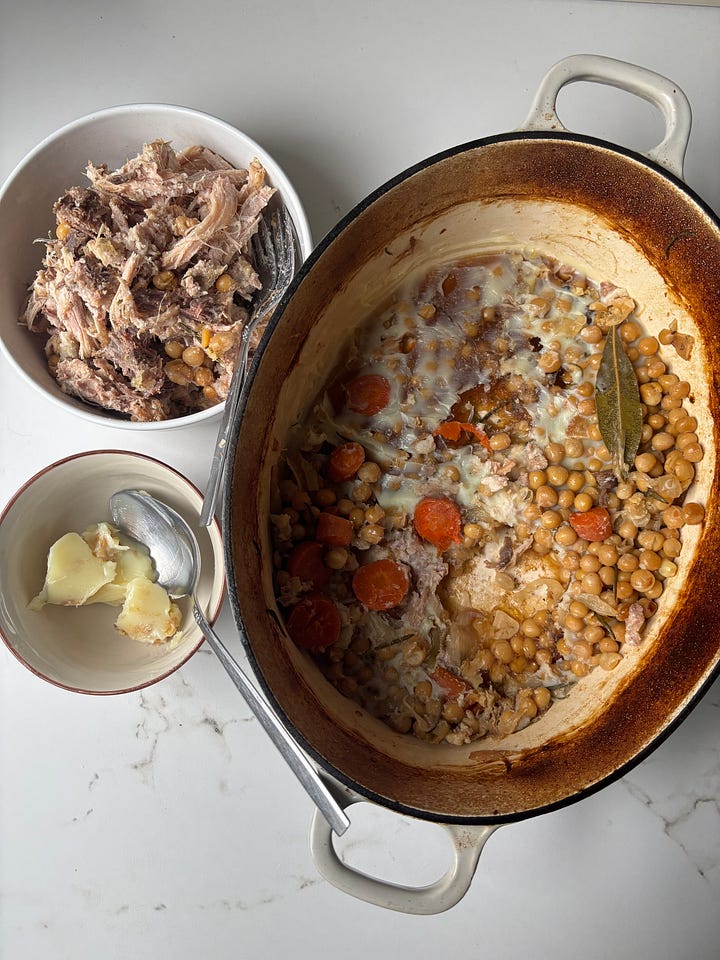
Pork cheek and bean pasta
Keep reading with a 7-day free trial
Subscribe to Every Bite to keep reading this post and get 7 days of free access to the full post archives.


